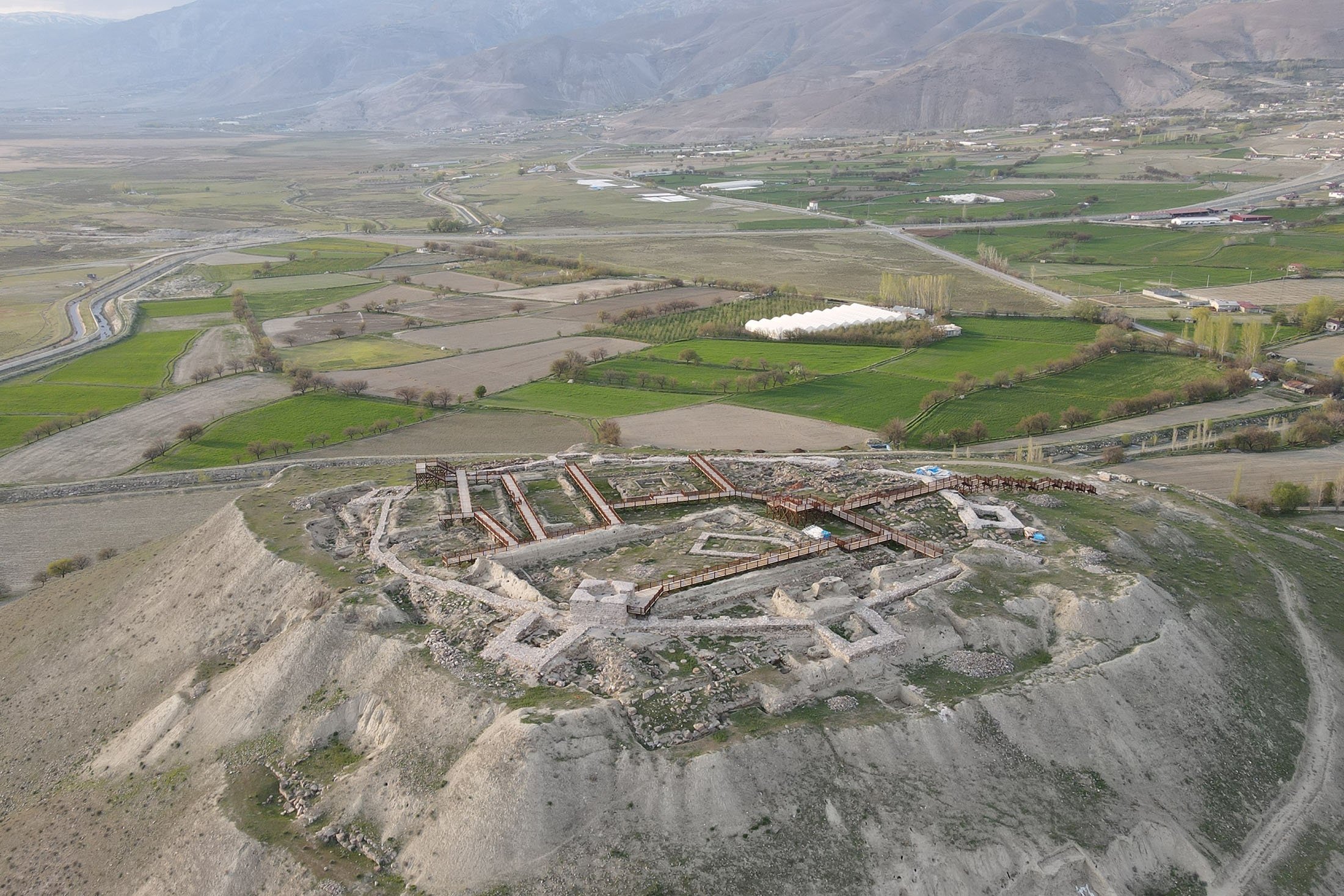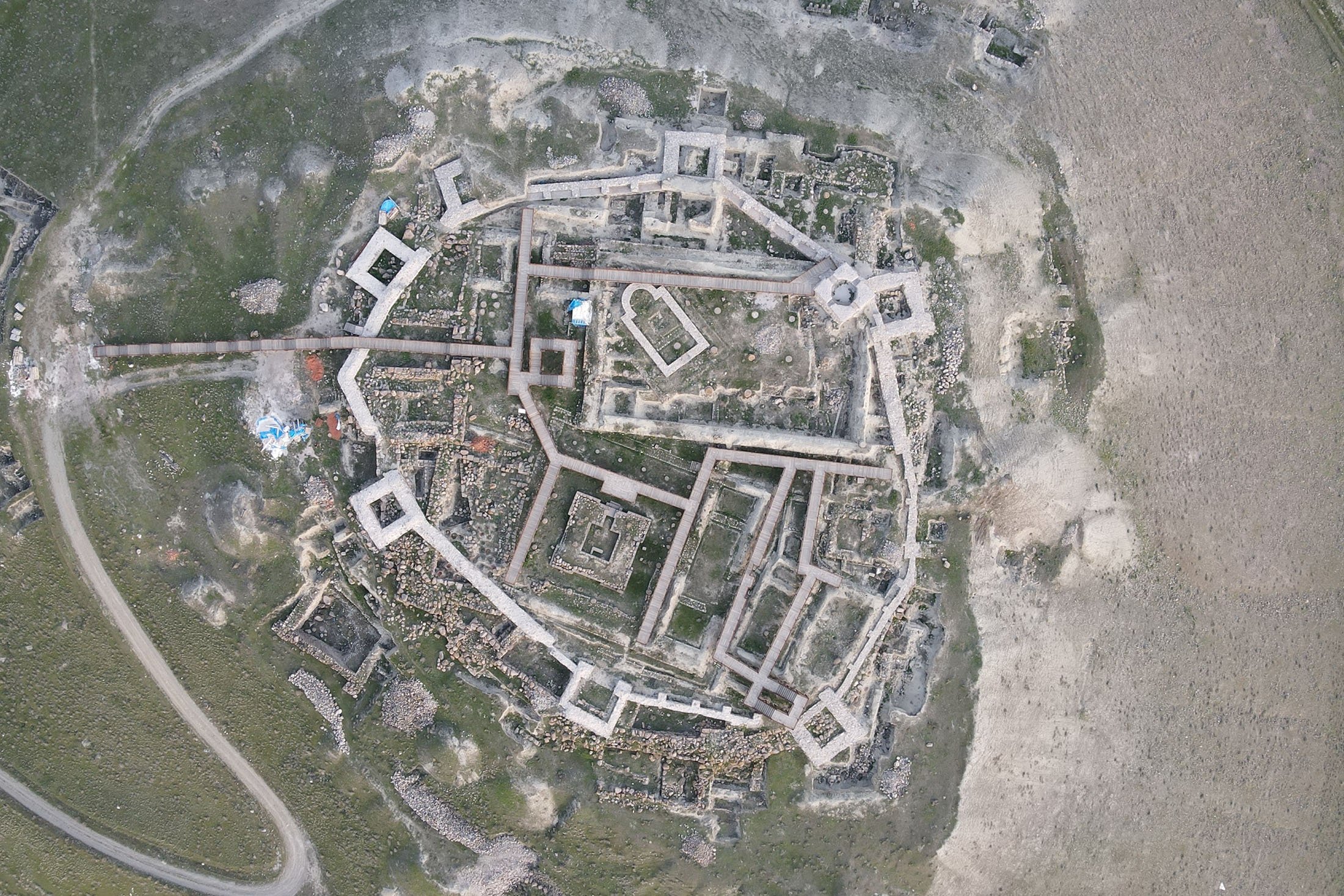© Turkuvaz Haberleşme ve Yayıncılık 2025
History is a fickle matter. If not carefully preserved, it quickly disappears into the cloudy nights of forgotten lands, never to be found again. The 2,900-year-old Altıntepe Castle – one of the most important cities of the Urartians in Anatolia, in eastern Turkey's Erzincan – can attest to that fact. Standing the test of time as the only remnant of its unique culture, it is now set to open to visitors after being converted into an open-air museum with excavations finishing at the site.
The artifacts unearthed in the Urartian-era Altıntepe Castle, which is located on the historical Silk Road and has been converted into an open-air museum affectionately nicknamed the "archeopark," are the only examples of the Urartian culture they represent.
Altıntepe Castle, one of the most important centers of the Urartians and the Eastern Roman Empire, is located on a 60-meter-high (196-feet-high) hill in the Üzümlü district, 14 kilometers (8.69 miles) northeast of Erzincan city center.

The first excavations in and around the Urartian castle, where there are hundreds of historical artifacts dating back to 850 and 590 B.C., were carried out between 1959 and 1967 under the direction of professor Tahsin Özgüç from Ankara University.
Restarted in 2003 by professor Mehmet Karaosmanoğlu in cooperation with the Ministry of Culture and Tourism and Atatürk University, the excavations were completed in 2019.
A lot of important information and many historical artifacts, some of which are singular examples, were obtained during the excavations carried out in the 2,900-year-old castle, which is one of the most important Urartian settlements in Anatolia. The historical insights gained from the excavations were evaluated in many articles and published in several books.
The castle has been restored since the excavations and converted into an open-air museum by laying walking paths. Once landscaping work has been completed, the museum will be opened to visitors.
Provincial Culture and Tourism Director Arda Heb told Anadolu Agency (AA) that the excavations in Altıntepe Castle contributed significantly to Anatolian archaeology.
Heb explained that the castle was converted into an open-air museum after many years of excavations.
"The first excavations in Altıntepe Castle, which is 14 kilometers from our city center, were initiated by the late Professor Tahsin Öngüç in 1959, and our professor's excavations continued until 1968. The second stage of excavations was carried out by Professor Mehmet Karaosmanoğlu between 2003 and 2020. In these studies, important architectural remains and artifacts belonging to the Urartian period have been found."
Heb stated that Altıntepe is one of the most important settlements of the Urartian civilization that has survived to the present day.

"The Urartian period structures unearthed in Altıntepe have made significant contributions to Anatolian archeology and are the only examples of the culture they represent. The artifacts excavated from the castle are exhibited in the Anatolian Civilizations Museum in Ankara and have been evaluated in many articles and published books. Altıntepe Castle has survived to the present day and is an important settlement of the Urartian civilization."
Heb stated that the site, which has been converted into an "archaeopark," contains many historical remains.
"The inner castle structure and walls, the temple, the apadana (a large hypostyle hall), the warehouse building, the foundation remains of the open-air temple and three underground tomb rooms, all of which belong to the Urartian period, have been unearthed in the castle," he said.
"In addition, the remains of a mosaic-based church decorated with animal figures from the post-Urartian period have survived to the present day. With the works carried out under the auspices of our Ministry of Culture and Tourism, the works are continuing to transform the castle into an archaeopark and serve as an open-air museum to our people."
